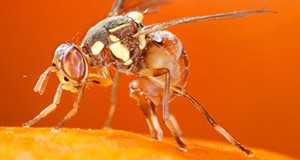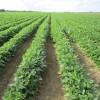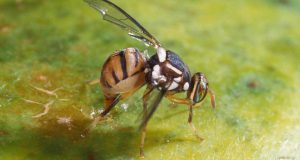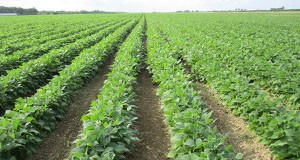This new 6-page factsheet provides information about soil arsenic (As) in Miami-Dade County, including basics, background concentrations, cleanup guidelines of soil As, and bioavailability of soil As related to plant and human health. Written by Yuncong Li, Ashley Smyth, Jonathan Crane, Christopher Teaf, and Guangliang Liu, and published by the UF/IFAS Department of Soil and Water Sciences.
https://edis.ifas.ufl.edu/ss696
Tag: Miami-Dade County
What the 2012 Census of Agriculture Is Telling Us about Miami-Dade County
Agriculture is an important contributor to Florida’s economy. Only the tourism industry employs more Floridians. In 2012, agricultural output was estimated at $141.8 billion, accounting for 14.9% of the state’s gross domestic product, and providing employment for 20.8% of the state’s labor force. Monitoring the performance of the sector over time is therefore of critical importance to various stakeholders. This 8-page publication written by Edward Evans and published by the Food and Resource Economics Department focuses on the Agricultural Census data for Miami-Dade County and specifically examines trends over the 15-year period from 1997 to 2012 with the aim of highlighting some of the major trends occurring in the Miami-Dade County agricultural sector. In general, the data show that in spite of challenging times, the agricultural industry has remained important, contributing $604 million to the Florida economy in 2012.
http://edis.ifas.ufl.edu/fe1001
Estimated Costs and Regional Economic Impacts of the Oriental Fruit Fly (Bactrocera dorsalis) Outbreak in Miami-Dade County, Florida
Oriental fruit flies, very destructive pests of fruits, were first detected in the Redland area of Miami-Dade County on August 26, 2015, and as of January 2016, 165 flies had been captured. This triggered an eradication program and establishment of a quarantine area composed of agricultural operations and nonagricultural properties, such as residential and commercial areas. As part of the effort to eradicate the fruit fly, growers and packers in the quarantine area are required to sign a compliance agreement that outlines the procedures necessary for harvesting, handling, and postharvest processing of agricultural products that may serve as hosts for any life cycle of the fruit fly. This 12-page fact sheet written by Sergio Alvarez, Edward A. Evans, and Alan W. Hodges and published by the UF Food and Resource Economics Department provides estimates of the direct and indirect losses to Florida’s agriculture and related sectors as a result of the outbreak and ensuing quarantine and eradication programs.
http://edis.ifas.ufl.edu/fe988
HOT TOPIC: Oriental Fruit Fly

On Tuesday September 15th 2015, Florida Commissioner of Agriculture Adam H. Putnam declared a state of agricultural emergency due to the oriental fruit fly infestation in Miami-Dade County. The oriental fruit fly is considered one of the most serious of the world’s fruit fly pests due to its potential economic harm. For general information on this destructive pest of fruit, see EENY-083: Oriental Fruit Fly, Bactrocera dorsalis (Hendel) (Insecta: Diptera: Tephritidae) an informative Featured Creatures fact sheet describing the species, its distribution, life history, hosts, damage, quarantine & management, and selected references. (Photo Credit: Scott Bauer, USDA)
Also see these useful sources for news and information on the emerging threat:
Snap Bean Soil Fertility Program in Miami-Dade County
In terms of acreage, snap beans are the most commonly grown vegetable in Miami-Dade County. This 2-page facts sheet outlines the impact of fertilizer use and local weather and soil on snap bean production in this region. Written by Monica Ozores-Hampton, Qiang Zhu, and Yuncong Li, and published by the UF Department of Horticultural Sciences, May 2015. http://edis.ifas.ufl.edu/hs1261
Bush Snapbean Production in Miami-Dade County, Florida
 Miami-Dade County is the primary production region for fresh-market bush snapbeans with 57% or 18,696 acres of the Florida bean acreage. Production costs vary from $16.53 to $21.87 per 30 lb. bushel or $4,046 to $4,711 per acre. Acceptable yields range from 185 to over 300 bushels per acre. Snapbeans produced in Miami-Dade County are sold nationwide for the fresh market starting just before Thanksgiving and continuing through the winter and spring months. This 9-page fact sheet was written by S. Zhang, D. Seal, M. Ozores-Hampton, M. Lamberts, Y. Li, W. Klassen, and T. Olczyk, specifically for growers in Miami-Dade County as a supplement to The Vegetable Production Handbook for Florida (SP170). Published by the UF Department of Horticultural Sciences, July 2014.
Miami-Dade County is the primary production region for fresh-market bush snapbeans with 57% or 18,696 acres of the Florida bean acreage. Production costs vary from $16.53 to $21.87 per 30 lb. bushel or $4,046 to $4,711 per acre. Acceptable yields range from 185 to over 300 bushels per acre. Snapbeans produced in Miami-Dade County are sold nationwide for the fresh market starting just before Thanksgiving and continuing through the winter and spring months. This 9-page fact sheet was written by S. Zhang, D. Seal, M. Ozores-Hampton, M. Lamberts, Y. Li, W. Klassen, and T. Olczyk, specifically for growers in Miami-Dade County as a supplement to The Vegetable Production Handbook for Florida (SP170). Published by the UF Department of Horticultural Sciences, July 2014.
http://edis.ifas.ufl.edu/tr005
Ley del Estado de la Florida para el avalúo tributario de tierras según su uso: Preguntas y respuestas sobre la Clasificación Agropecuaria en el Condado de Miami-Dade (FE895)
 Use-value assessment is the most widely used technique in the United States today for maintaining land in agricultural production. Although general guidelines are provided to Florida counties on the application of the state’s use-value assessment law, counties may vary slightly in the application and determination of the agricultural land’s value. Therefore, it is important for agricultural landowners to understand the guidelines used to determine value in the county where the land is assessed and taxed. This 6-page factsheet applies specifically to Miami-Dade County, Florida. Written by Edward A. Evans, Mauricio Mosquera, Rodney L. Clouser y Jonathan Crane, and published by the UF Department of Food and Resource Economics, August 2011.
Use-value assessment is the most widely used technique in the United States today for maintaining land in agricultural production. Although general guidelines are provided to Florida counties on the application of the state’s use-value assessment law, counties may vary slightly in the application and determination of the agricultural land’s value. Therefore, it is important for agricultural landowners to understand the guidelines used to determine value in the county where the land is assessed and taxed. This 6-page factsheet applies specifically to Miami-Dade County, Florida. Written by Edward A. Evans, Mauricio Mosquera, Rodney L. Clouser y Jonathan Crane, and published by the UF Department of Food and Resource Economics, August 2011.
http://edis.ifas.ufl.edu/fe895
Miami-Dade County’s Urban Forests and Their Ecosystem Services (FOR285/FR347)
 The urban forest in Miami-Dade County reduces air pollution, controls stormwater, reduces crime, increases real estate values, and improves livability. This 14-page fact sheet can be used by urban foresters, residents, and planners to better understand and maximize the benefits of this important natural resource. Written by Francisco Escobedo, Joy Klein, Micah Pace, Henry Mayer, and Sebastian Varela, and published by the UF Department of School of Forest Resources and Conservation, July 2011. (UF/IFAS Photo by Eric Zamora)
The urban forest in Miami-Dade County reduces air pollution, controls stormwater, reduces crime, increases real estate values, and improves livability. This 14-page fact sheet can be used by urban foresters, residents, and planners to better understand and maximize the benefits of this important natural resource. Written by Francisco Escobedo, Joy Klein, Micah Pace, Henry Mayer, and Sebastian Varela, and published by the UF Department of School of Forest Resources and Conservation, July 2011. (UF/IFAS Photo by Eric Zamora)
http://edis.ifas.ufl.edu/fr347
Florida’s Use-Value Assessment Law: Questions and Answers for Miami-Dade County Agricultural Classification (FE890)
Use-value assessment is the most widely used technique in the United States today for maintaining land in agricultural production. Although general guidelines are provided to Florida counties on the application of the state’s use-value assessment law, counties may vary slightly in the application and determination of the agricultural land’s value. Therefore, it is important for agricultural landowners to understand the guidelines used to determine value in the county where the land is assessed and taxed. This 5-page factsheet applies specifically to Miami-Dade County, Florida. Written by Edward A. Evans, Mauricio Mosquera, Rodney L. Clouser, and Jonathan Crane, and published by the UF Department of Food and Resource Economics, April 2011.
http://edis.ifas.ufl.edu/fe890
FE837 Sample Avocado Production Costs and Profitability Analysis for Florida
FE837, a 4-page illustrated fact sheet by Edward A. Evans and Sikavas Nalampang, provides an estimate of the costs and returns associated with avocado production in Miami-Dade County and a brief analysis of the profitability of the industry. Includes references. Published by the UF Department of Food and Resource Economics, June 2010.
http://edis.ifas.ufl.edu/fe837



